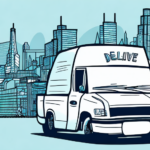The Growth of Online Shopping: Current Trends and Drivers
In recent years, e-commerce has experienced explosive growth, transforming the retail landscape globally. The convenience of shopping from any location—be it your home, office, or while on the move—has made online platforms the preferred choice for millions of consumers. According to a 2023 report by Statista, global e-commerce sales are projected to surpass $7 trillion by 2025, up from $6.3 trillion in 2022.
Rise of Mobile Devices and Internet Connectivity
The proliferation of smartphones and enhanced internet connectivity have been pivotal in driving the surge in online shopping. With advancements in mobile technology, consumers can seamlessly browse and purchase products on-the-go, contributing significantly to the increase in e-commerce sales.
Impact of the COVID-19 Pandemic
The COVID-19 pandemic accelerated the adoption of online shopping as lockdowns and social distancing measures compelled consumers to shift their purchasing habits online. A study by eMarketer highlights that the pandemic led to a 30% increase in e-commerce adoption among consumers.
Advantages of E-Commerce Home Delivery
Home delivery stands out as one of the most significant benefits of e-commerce, offering unparalleled convenience and efficiency to consumers. The ability to receive products directly at one's doorstep eliminates the need for physical store visits, saving both time and effort.
Convenience and Time-Saving Benefits
Online shopping allows consumers to shop 24/7 without the constraints of store hours. This flexibility enables individuals to make purchases at their convenience, whether during a lunch break or late at night, thereby optimizing their time.
Cost Savings for Consumers
Online retailers often offer competitive pricing compared to brick-and-mortar stores due to lower overhead costs. Additionally, consumers can benefit from exclusive online discounts, free shipping offers, and bulk purchase deals.
Eco-Friendly Shipping Options
Many online retailers are adopting sustainable shipping practices to minimize environmental impact. Options such as consolidated shipments, use of electric vehicles, and recyclable packaging materials are becoming increasingly common.
Revolutionizing the Retail Landscape
E-commerce has fundamentally altered the traditional retail ecosystem, fostering innovation and expanding market reach. Businesses can now operate without geographical limitations, accessing a global customer base with ease.
Expanding Market Reach
Online platforms enable businesses to reach customers beyond their local regions, tapping into international markets. This global accessibility is particularly beneficial for small and medium-sized enterprises aiming to scale their operations.
Empowering Small Businesses
The rise of e-commerce has leveled the playing field for small businesses, allowing them to compete with larger corporations. Platforms like Shopify and BigCommerce provide tools and resources for small businesses to establish and grow their online presence.
Leveraging Data Analytics
Data analytics play a crucial role in understanding consumer behavior and preferences. E-commerce platforms utilize data-driven insights to personalize shopping experiences, optimize inventory management, and enhance marketing strategies.
Safe and Secure E-Commerce Practices
Ensuring the safety and security of online transactions is paramount in maintaining consumer trust. E-commerce platforms employ robust security measures to protect sensitive information and prevent cyber threats.
Secure Payment Options
Consumers have access to a variety of secure payment methods, including credit cards, digital wallets like PayPal and Apple Pay, which offer encrypted transactions and fraud protection features.
Best Practices for Consumers
To enhance online shopping security, consumers should use strong, unique passwords, enable two-factor authentication, and regularly monitor their financial statements for any unauthorized transactions.
Choosing Reliable Delivery Services
Selecting reputable delivery services ensures that products are delivered safely and promptly. Consumers should look for delivery providers with positive reviews and robust tracking systems.
The Future of E-Commerce Home Delivery
The landscape of e-commerce home delivery is poised for further innovation and growth. Emerging technologies and evolving consumer expectations are set to shape the future of online shopping.
Innovations in Delivery Methods
Advancements such as drone deliveries, autonomous vehicles, and smart lockers are set to revolutionize the delivery process, enhancing speed and efficiency while reducing operational costs.
Subscription-Based Services
Subscription models are gaining traction, offering consumers regular deliveries of essential items. This model provides convenience and ensures consistent revenue streams for businesses.
Impact on Traditional Retail
The continued growth of e-commerce is expected to further shift consumer preferences away from physical stores. Traditional retailers are adapting by enhancing their online presence and integrating omni-channel strategies.
Sustainable Online Shopping Practices
As environmental concerns become more prominent, sustainable practices in e-commerce are gaining importance. Both retailers and consumers are seeking ways to minimize the ecological footprint of online shopping.
Reducing Carbon Footprint
Consumers can contribute by consolidating orders, choosing slower shipping options, and supporting retailers that prioritize sustainability. Retailers can implement energy-efficient operations and optimize supply chains to reduce emissions.
Sustainable Packaging Initiatives
Many e-commerce businesses are adopting eco-friendly packaging solutions, such as biodegradable materials, minimalistic packaging designs, and reusable containers to decrease waste.
Eco-Friendly Delivery Vehicles
Transitioning to electric or hybrid delivery vehicles significantly lowers carbon emissions. Companies like DPD and FedEx are investing in greener fleets to support sustainable delivery operations.
Changing Consumer Habits: E-Commerce in Various Sectors
E-commerce is not limited to traditional retail; it is transforming various sectors by providing tailored online solutions to meet diverse consumer needs.
Online Grocery Shopping
Grocery e-commerce has seen substantial growth, especially during the pandemic. Platforms like Instacart and Amazon Fresh offer extensive product selections and convenient delivery options.
Subscription-Based Models
Subscription services for products ranging from meal kits to personal care items are increasingly popular, offering consumers regular delivery of curated products tailored to their preferences.
In conclusion, e-commerce home delivery offers a plethora of benefits for today's consumers. From the convenience of shopping from anywhere at any time to cost savings and eco-friendly shipping options, e-commerce has revolutionized the way we shop. As the retail industry continues to evolve, we can expect e-commerce to maintain its upward trajectory, further reshaping how we buy and consume goods both in-store and online.






















